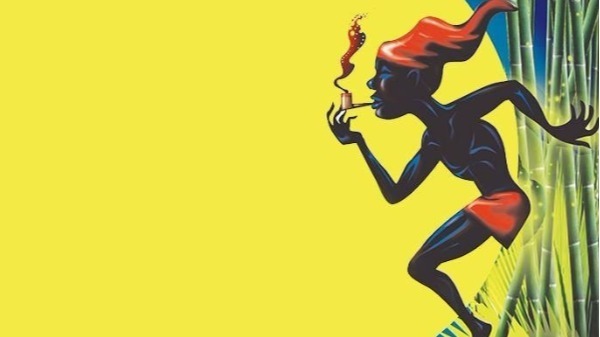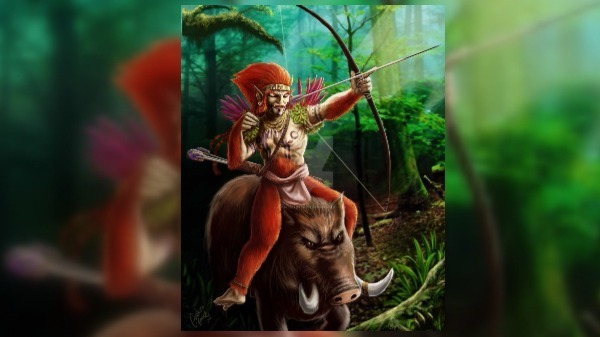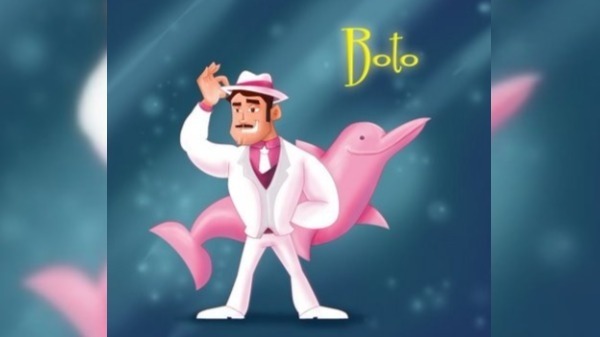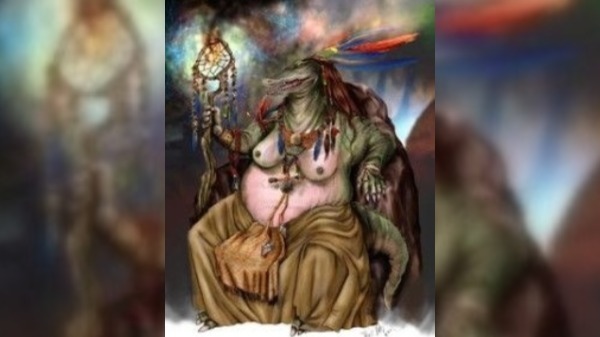Brazil is the owner of a rich folklore, the result of the junction of cultures and traditions of different peoples, especially the indigenous, African and European.
Thus, several mythological stories emerged that involve fantastic beings and creatures that have haunted and amazed Brazilians for centuries.
Check out some of the most popular characters in national folklore, as well as the main characteristics of their respective legends.
Iara

Also known as Uiara ("Lady of the Waters", in the Tupi-Guarani language), this is the character of the famous legend of Mãe D'Água, one of the most representative of Brazilian folklore.
The legend of Iara tells that this is a creature half woman and half fish (a kind of mermaid), which inhabits the rivers of the Amazon region.
Mãe D'Água is described as having long black hair and a mesmerizing voice. According to legend, Iara emits a sound so pleasant that all men are attracted to it.
legend of Iara
The story traditionally transmitted by the natives says that Iara was a beautiful young woman and all her brothers were jealous of her beauty.
In addition to being extremely beautiful, Iara was also a very brave warrior. So, the only solution her brothers found to get rid of such envy would be to kill the girl.
But, Iara manages to kill his brothers first. Consequently, Iara runs away so as not to have to suffer the punishment of her father, the tribe's shaman. But he ends up finding her and as punishment, throws his daughter into the river.
The fish save Iara, transforming her into a mermaid. So India starts using its beauty and seductive voice to attract men to the bottom of the river, killing them by drowning.
According to the legend, the man who is "lucky" to escape the curse of Iara, goes mad. Only a powerful shaman would have the ability to make the person return to his normal state.
Originally, the first stories about the legend of Iara narrated the character as a man, called Ipupiara. This newt was reputed to devour fishermen in the region. It was only from the 18th century that the legend of Iara supposedly gained the version that is popular today.
Saci-Pererê

Another very popular character in national folklore. Saci-Pererê is described as a black boy who has only one leg, wears a red cap and always has a pipe in his mouth.
Saci is known for being very playful. Among his main antics, the best known are:
- make the food burn;
- exchange salt for sugar;
- braiding horses' tails;
- whistle to scare animals and people;
- hide household objects, etc.
Despite being characterized for having these behaviors, Saci-Pererê is not usually violent, according to the main legends.
Saci-Pererê is such an outstanding character in the Brazilian folk scene that an exclusive commemorative date was created for him: October 31, the Saci's Day. This is seen as an alternative to halloween, with the purpose of making Brazilians celebrate the richness of national folklore.
Legend of Saci-Pererê
The first stories about this creature appeared in the indigenous tribes of southern Brazil. At the time, Saci was portrayed as a kind of little devil, with two legs, a mulatto color and a tail.
The contemporary legend of Saci-Pererê originated from the combination of characteristics from various places. The black color and the lack of a leg is an influence of African culture, as Saci would have lost his lower limb in a capoeira fight, according to history. The red hat, however, is a heritage of European traditions.
The legend of Saci varies according to the region of the country, but most narratives consider the character as the protector of medicinal herbs and plants. Saci would have a deep knowledge about the healing properties of all Brazilian flora.
Legend has it that Saci can be found in the whirlpools and can be easily captured if one throws a sieve over the whirlpools. After capturing it, the creature's cap must be removed, thus ensuring its obedience. To prevent the Saci from escaping, you can trap it inside a glass bottle.
Sacis are born inside bamboo, where they stay for seven years. Once adults, they live for 77 years. When they die, these demonic creatures turn into wood ears or poisonous mushrooms.
Curupira

Like Saci, Curupira is another character in Brazilian folklore who inhabits the forests and is known for doing a lot of mischief.
Curupira is described as a red-haired dwarf, with lots of body hair and feet turned back. The creature uses this last feature as a ruse to deceive people, causing them to get stuck in the woods and not find their way home.
legend of Curupira
The first narratives about the legend of Curupira are from the 16th century, when it was described by the Jesuits as the "demon that persecutes the Indians".
Unlike Saci, Curupira is considered an evil being, capable of harming people and, for this reason, it has always been much feared by the Indians.
According to legend, Curupira persecutes people who disrespect the forest, such as lumberjacks, hunters, etc. Stories of mysterious abductions, rapes and other cases of unexplained violence that take place in the woods used to be associated with the "forest demon".
So that the person is not targeted by Curupira, the legend says that it must offer sugar cane cachaça or tobacco, as the creature supposedly likes smoking and drinking a lot.
It is also advisable to tie a vine and hide one end well, as Curupira is also described as having a surprising curiosity. In this way, the creature would spend a lot of time entertained with the vine and would forget to torment the person who ventures into the forest.
Learn more about Curupira.
Caipora

Often confused with Curupira, Caipora is another traditional character in Brazilian folklore. Its legend is very common in the Amazon region, and its name originates from the Tupi-Guarani cowpea, which means "forest dweller".
Unlike its "cousin" Curupira, Caipora does not have the feet turned backwards, but it is also described as a dark-skinned creature, covered in red fur and that is always mounted on a wild boar.
Caipora legend
Like many other folkloric characters from the Amazon region, Caipora also protects the forests, attacking anyone who disrespects their space.
Most legends say that Caipora has special powers related to nature, such as controlling or resurrecting animals. To protect its ecosystem, the creature sets traps and gives hunters false clues to get lost.
Legend says that Caipora usually acts more intensely on Sundays, Fridays and holy days. So that the person can enter the forest and not run the risk of being caught by Caipora, the culture popular teaches that it is necessary to leave some gifts for the creature, such as rope smoke, for example.
Caipora, however, has always been described in the stories narrated by the indigenous people as a very treacherous entity. Some narratives tell that this mythological being is cannibal, capturing his victims who will serve as his meal.
Depending on the region of the country, there are different reports about the legend of this entity. Some stories narrate Caipora as having a green body, while others consider it synonymous with Curupira, that is, both would be the same creature.
Headless mule

This is another legendary character very popular in Brazilian folklore. The creature is described in the stories as a brown or black mule that it fires in the place of your head.
The legend of the headless mule is based on the conservative and moralistic ideals of the Catholic Church, when sexual relationships were prohibited before marriage.
Legend of the Headless Mule
The origin of this legend is unknown, but it is believed to be related to the arrival of the Jesuits and Catholicism in the country.
According to history, the entire woman who fell in love with a priest turned into a headless mule. This is because, in the past, priests were seen as "saints" and not men. Thus, falling in love with a member of the clergy was regarded as a great sin.
Folk stories say that the bewitched woman often turns into a headless mule on Thursdays. She spends the entire night neighing in despair and running through the woods, killing everything in her path.
Legend still says that one of the ways to undo the curse would be for someone to pull out the iron bridle that the animal carried on its feet. Another alternative to end the enchantment would be to pierce the creature with a sharp object to get some "sin blood".
Boitatá

It is described as a gigantic fire snake, in most folkloric narratives in Brazil. The name Boitatá is of Tupi-Guarani origin (mob = snake | tata = fire).
Boitatá lives in the woods and protects the forest against degradation caused by humans, especially fires. According to the legend, the person who looks directly at a Boitatá goes blind, mad or dies.
Legend of Boitatá
Of indigenous origin, there are several variations of the Boitatá legend. The first written account of history dates back to the 16th century, made by the Father José de Anchieta, where he describes a creature shaped like a snake and made of fire. But in other regions of the country, Boitatá is also described as a bull that breathes fire through its mouth.
Among some of the main features of Boitatá is the ability to turn into a burning log, burning whoever is nearby. This trick would be used by the creature to get revenge on forest firemen.
In the northeast region, Boitatá is also known as "Alma dos Compadres e das Comadres". But, in this case, the mystic being would represent the spirits of evil people.
Many people consider the origin of the legend of Boitatá a primitive attempt to explain the wildfire, a chemical reaction caused when some compounds released from decomposing bodies come into contact with oxygen in the air.
boto

The legend of the pink dolphin is another one of the most disseminated in national popular culture. The stories tell that during the festivities in June, this "dolphin of the Amazon rivers" turns into a handsome man and seduces young girls from the riverside towns.
Legend of the Dolphin
The best known narrative about the legend of the boto says that this is a very intelligent being. During nights with a full moon, especially during the June court, the dolphin turns into a very handsome and seductive boy.
Dressed all in white and with a big hat on his head, the boto chooses the most beautiful virgin at the party to be his companion that night. The creature takes the girl to the bottom of the river, where she makes her pregnant.
Legend still says that the boto cannot complete the metamorphosis from animal to man and, therefore, wears a hat. The creature uses this prop to hide a hole in the middle of its head, which would be the dolphin's nostrils.
This legend is very common in riverside communities in the Amazon region for try to justify an accidental pregnancy, meaning that it happened outside of a stable relationship.
Therefore, it is said that when the woman does not know the identity of the child's father, this is "son of the boto".
Learn more about the meaning of legends.
head

This is another mythological being very well known in Brazilian folklore. Cuca is described as a scary witch, with sharp claws and, in some versions, has the head of an alligator.
The popularity of this folkloric character increased when she was portrayed by Monteiro Lobato in the children's classic Yellow Woodpecker Site.
legend of cuca
According to the legend, Cuca likes kidnap and eat children who disobey their parents. Therefore, it is common in Brazilian popular culture to tell stories about Cuca to "force" children to behave.
One of the best known examples is the traditional lullaby:
"Nana, the baby Cuca is coming to pick up, Dad went to the fields, Mom went to work."
The origin of the legend is based on a mythological being known among the peoples of the Iberian Peninsula (Portugal and Spain): a Coke. This monster was described as a dragon that ate disobedient children. The story still said that the creature was constantly on the roofs of houses, spying on the actions of impolite young people.
steer

Also known as Cobra-Grande or Mãe-do-Rio, the Boiuna is a popular creature in the folk stories of the Amazon region.
Legend of Boiuna
Boiuna is described as a dark colored snake with shiny skin. This animal is so large that it is capable of sinking boats, according to folk tales. Legends also say that this being has the power to provoke illusions and to transform into a woman.
When Boiuna gets old he will look for food in the land. As he cannot hunt in an environment he is not used to, the stories tell that the Boiuna receives help from a centipede that is an incredible 5 meters in length.
Find out more about the Brazilian folklore and see also who is Oxossi.


